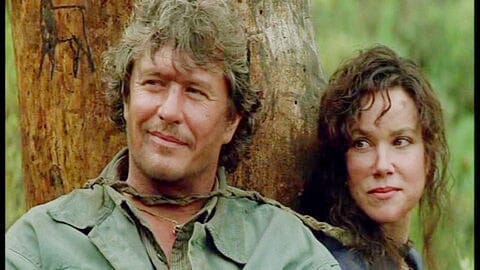Last of the Dogmen (1995): A Forgotten Frontier Fable of Honor and Survival
Last of the Dogmen (1995), directed by Tab Murphy, is a unique blend of Western adventure, historical fantasy, and spiritual exploration. Set against the sweeping landscapes of the Montana wilderness, the film tells a tale of discovery, redemption, and the clash between modernity and a vanished past. Though it never achieved blockbuster status, the film has developed a quiet cult following for its emotional depth, strong performances, and breathtaking cinematography.
The story follows Lewis Gates, a rugged bounty hunter played by Tom Berenger, who is hired to track a group of escaped convicts deep in the uncharted territories near the Montana-Canada border. As he delves further into the remote mountain terrain, Gates stumbles upon evidence of a mysterious, hidden civilization. Joined by anthropologist Dr. Lillian Sloan, played by Barbara Hershey, the two uncover the shocking truth: a surviving band of the Cheyenne Dog Soldiers, long believed extinct, have secretly lived in isolation for over a century, untouched by modern civilization.

Rather than taking the predictable route of a violent confrontation between cultures, Last of the Dogmen opts for a more humanistic and introspective narrative. It explores themes of respect, survival, and the power of cultural preservation. The Cheyenne tribe is portrayed with dignity and strength, not as relics or curiosities, but as proud people choosing to live according to their ancestral values. Their hidden existence becomes a symbol of resistance to cultural erasure and a living link to a world most thought lost.
Tom Berenger gives a sincere, emotionally layered performance as Lewis Gates, a man haunted by personal loss and disillusionment with the modern world. His transformation—from a cynical tracker to a man who learns humility and reverence for a culture he once saw as myth—is the heart of the film. Barbara Hershey brings intelligence and compassion to her role, serving as both the film’s moral compass and a bridge between two worlds. Their chemistry is understated but believable, allowing the film to remain focused on its central themes rather than descending into romantic cliché.

Visually, Last of the Dogmen is stunning. The cinematography by Karl Walter Lindenlaub captures the majesty of the American wilderness in a way that evokes both wonder and reverence. Sweeping shots of dense forests, rugged mountains, and mist-covered valleys create a dreamlike sense of timelessness, reinforcing the idea that this hidden world might plausibly exist just beyond the reach of modern eyes. The score by David Arnold is equally evocative, blending orchestral swells with Native American musical motifs, enhancing the film's emotional resonance.
Though it deals with elements of fantasy, Last of the Dogmen is grounded in a deep respect for indigenous cultures and the importance of historical memory. It does not seek to romanticize the past, but rather to reflect on what has been lost—and what might still be preserved. In a cinematic landscape often dominated by loud action and superficial storytelling, this film stands out as a quiet, heartfelt tribute to resilience, honor, and the sacred connection between people and the land.

Ultimately, Last of the Dogmen (1995) is more than a Western. It’s a mythic journey that challenges viewers to look beyond the visible world, to reconsider the histories we assume are over, and to find redemption in unexpected places.

